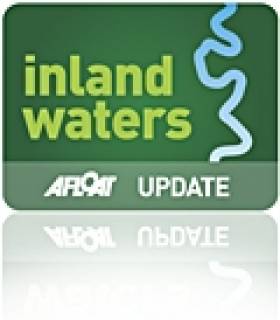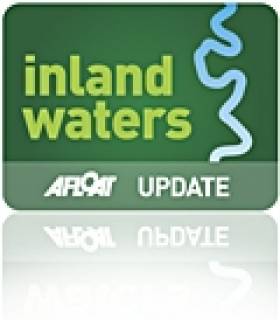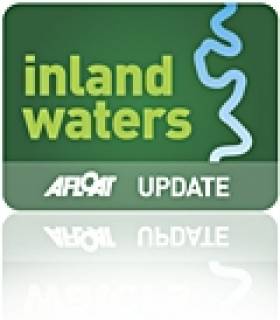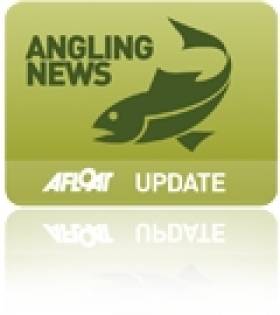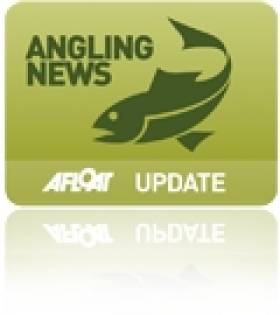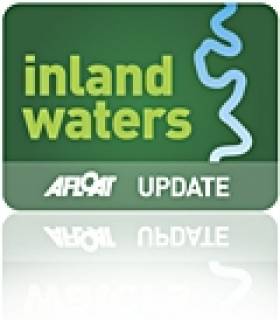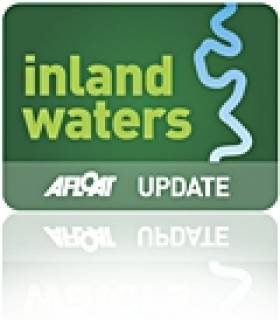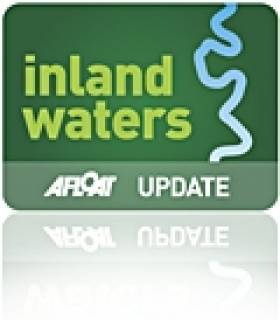Displaying items by tag: Byelaws
Waterways Ireland Proposes Changes To Lough Erne Bye-laws
#InlandWaters - Waterways Ireland, with the approval of Northern Ireland's Department of Culture, Arts & Leisure (DCAL), has made proposals to change the Lough Erne Navigation Bye-laws.
A limited number of changes are being proposed with the intention of enhancing the visitor recreational experience and increasing the deterrent to blocking of public moorings by private boatowners.
The enhancement of the visitor's recreational experience is being sought through two measures: the increase of the current 48-hour maximum mooring period on a public jetty to three days, with a requirement to then move more than 3km away before mooring on another public jetty; and the ability to flexibly place and remove speed and wake restrictions.
Both changes are focused on supporting the ability of boaters of all kinds to tour, extend their stay and enjoy events and recreational activity on Lough Erne.
The new measures will deter the persistent occupation of public moorings by an increasing cohort of private boaters, particularly in Enniskillen.
Currently Waterways Ireland is required after a series of warnings to take offenders to court where the magistrate has the ability to impose a maximum penalty of £50 per offence.
The proposed increase in fines to a maximum of £1,000 is the Standard Scales of Fines Level 3 (of 5) established under the Fines and Penalties (Northern Ireland) Order 1984 and is currently in use in the Regulation 49(4) of The Water (Northern Ireland) Order 1999, the overarching bye-laws for navigation on Lough Erne. The magistrate will then have the power to impose a fine up to £1,000.
Additionally, Waterways Ireland is seeking the power to remove from Lough Erne abandoned or sunken vessels and boats in breach of the bye-laws after a 30-day notice period has been extended to the owner.
Waterways Ireland relied in the past on educating and advising boat owners to warn of breaches and asking them to comply, and this will remain its primary focus. However, the number of boat owners persistently breaking the bye-laws, particularly mooring bye-laws by mooring their boat on a permanent basis at a public mooring, has grown substantially in recent years and has become an impediment to the free movement of boats particularly around Enniskillen.
Waterways Ireland and DCAL have agreed to seek these changes to the bye-laws to enhance the opportunities for hire cruisers, visiting boaters, event organisers and visitors, and recreational/activity centres to continue to use Lough Erne as an open and freely moving waterway now and into the future.
A public consultation period has opened for individuals, groups and organisations to comment on the proposed changes and will run until the 22nd May 2015. A public information event is also being held from 3-7pm next Tuesday 10 March 2015 to enable interested people to meet with Waterways Ireland staff and give their feedback.
For those unable to attend, the proposed changes are detailed on the Waterways Ireland website HERE, where an online submission form is also available.
Alternatively, people can visit the Waterways Ireland Headquarters weekdays from 10am-1pm and 2pm-5pm to view the documents and complete a submission.
The bye-laws being changed are the Lough Erne (Navigation) Bye-laws (Northern Ireland) 1978 as amended by The Lough Erne (Navigation) (Amendment) Bye-laws (Northern Ireland) 1986.
#InlandWaters - Waterways Ireland's recent report on consultation responses to the proposed changed to canal bye-laws is "an incomplete document" according to the Inland Waterways Association of Ireland (IWAI).
In a statement, the IWAI listed its criticisms of the report, namely that:
- There is no mention of the meeting with the Oireachtas Joint Committee on Environment, Culture and the Gaeltacht;
- There is no commentary on requests to change the future consultation period from 21 days to three months so that it is compatible with the Corporate Plan Consultation period and more customer friendly;
- There is no commentary on winter mooring provision on the Royal and Grand Canals and River Barrow as is provided on the Shannon navigation;
- Service level agreements and a customer services charter are not included;
- There is no mention of houseboats, despite this being a major issue;
- It fails to note that only one user group is still being subjected to charges;
- There is no mention of the €250 deposit on the extended mooring permit;
- There is no mention of the Barrow open boat fishing licence;
- There is no mention of requests to have a multi-agency approach to planning;
- There is no mention of daily mooring charges in Grand Canal Docks;
- There are no details provided on any impact assessment reports conducted by Waterways Ireland on proposals;
- The Dutch Barge Association submission is not noted or copy posted with all other submissions on the website; and
- The report includes what IWAI considers to be a wholly inaccurate statement on negative effect on tourism.
The association also claims that the report is "contradictory in itself", noting that "the section dealing with Waterways Ireland responses to the various submissions indicates that prior to addressing all concerns in relation to the bye-laws, there is significant work to be done by Waterways Ireland on a number of issues.
"Yet the section on the consultation process states that they have completed a final report with changes arising from consideration of the consultation process, and once viewed by senior counsel it will be forwarded to the Minister for Arts, Heritage and the Gaeltacht for his consideration and final decision."
The IWAI reiterated its position that the proposed Waterway Ireland canal bye-laws "do not put user requirements, tourism development and local communities at the centre of the regulations."
Offaly Council Says No To Proposed Canal Bye-Laws
#InlandWaters - The Inland Waterways Association of Ireland (IWAI) said this week it welcomed Offaly County Council’s rejection of the propsed canal bye-law amendments.
IWAI president Carmel Meegan said the decision was further proof that “the proposed bye-laws do not put user requirements, tourism development and local communities at the centre of the regulations.”
The motion was moved by Cllr Liam Quinn and seconded by Cllr Tommy McKeigue. It was passed unanimously by the council on Monday 28 April last.
Cross-party contributions highlighted areas of concerns with the draft amendments to the canal bye-laws, including the potential for the new rules as proposed by Waterways Ireland to damage canal-based tourism and related businesses in the Tullamore and Edenderry areas.
Also noted was the potential impact of the "prohibitive" enforement of a five-day rule for mooring.
Offaly County Council's position comes after the IWAI decried what it sees as an "information vacuum" over feedback to the proposed changes to the bye-lawa governing Ireland's canals, more than four weeks after the Joint Oireachtas Committee on Environment, Culture and the Gaeltact met to discuss submissions on the controversial proposals.
IWAI Decries 'Information Vacuum' Over Canal Bye-law Changes
#InlandWaters - Four weeks after its review by a joint Oireachtas committee, there is still an "information vacuum" regarding feedback on the proposed changes to Ireland's canal bye-laws, according to the Inland Waterways Association of Ireland (IWAI).
A meeting organised by the IWAI at a rally in Hazelhatch on the Grand Canal over the Easter weekend heard surprise among members that none of the some 2,000 individual submissions have been acknowledged, nor have these submissions been published on the Waterways Ireland website.
Members also expressed disappointment that no timeframe for the submissions review process has been announced.
The IWAI remains steadfast in its opposition to the current proposed amendments to canal bye-laws, which were recently rejected in a unanimous vote by Kildare County Council over concerns that they "do not put user requirements, tourism development and local communities at the centre of the regulations."
Hundreds of houseboat owners on Ireland's inland waterways would also be affected by the proposed changes that could see additional charges levied on different classes of canal and river users.
#Angling - The Department of Communications, Energy and Natural Resources has issued new bye-laws for anglers on conservation of salmon and sea trout on three rivers in the West of Ireland.
Bye-law No 917 provides for catch and release in respect of salmon and sea trout over 40cm in length in the Newport River including the waters of Lough Beltra and the Crumpaun River, Co Mayo during the period 20 March to 11 May 2014. More details HERE.
Bye-law No 918 provides for catch and release in respect of salmon and sea trout over 40cm in length in the portion of the Lower Shannon from O’Brien’s Bridge downstream, on the downstream face of the bridge, to Thomond Bridge in Limerick City during the period 1 March to 30 September 2014.
This bye-law also prohibits the use of worms as bait and any fish hooks other than single barbless hooks in angling for salmon and trout in those waters. More details HERE.
And Bye-law No 919 provides for catch and release in angling of salmon and sea trout over 40cm in length in the River Feale, including the Galy and Brick, from 1 March to 11 May 2014, and a bag limit of four fish during the period of 12 May to 30 September subject to a daily limit of one fish during this period.
This bye-Law also prohibits the use of worms as bait and any fish hooks, other than single barbless hooks, in angling for salmon and sea trout over 40cm in length up to 11 May and also from 12 May onwards once the permitted limit had been reached in those waters. More details HERE.
Kildare County Council Rejects Canal Bye–Law Amendments
#inland – The IWAI has welcomed Kildare County Council's rejection of the Waterways Ireland proposed Canal Bye-law amendments passed unanimously on Monday 24 February 2014.
Speaking this week, Carmel Meegan, President of The Inland Waterways Association of Ireland (IWAI) welcomed the unanimous support from Kildare's democratically elected representatives in the Council and added that it provides further proof that "the proposed bye-laws do not put user requirements, tourism development and local communities at the centre of the regulations."
The motion was moved by Councillor John McGinley.
It has been confirmed that at the end of the brief public consultation period of 21 days on Feb 3rd communities along the waterways had sent over 2100 submissions of concern to Waterways Ireland, with over 1800 of these being passed to IWAI (for IWAI to submit to Waterways Ireland). A number of international and national organisations and community groups have allowed the IWAI to publish their submissions on our campaign web page at www.iwai.ie.
Concerns continue to be aired including questions from members of the Seanad and the Dail; national and local press articles; television and radio interviews and features; community websites; blogs and facebook pages, in the Canals and Barrow as a national resource.
Politically, this has grown to be a very big issue nationally and regionally and is featuring highly as politicians face into local elections this summer.
Mr. Jimmy Deenihan, TD, Minister for Arts, Culture and the Gaeltacht has responsiblilty for signing any new regulations into law.
The bye-laws should concern Mr. Leo Varadkar, TD, Minister for Tourism, Transport and Sport as to the potential of the 'Green and Silver' navigation route, from Dublin to the Shannon via the Grand or Royal Canals and vice versa. This is promoted by Dublin IWAI.
Further work of Mr. Phil Hogan, TD, Minister for Environment, Community and Local Government should not be ruined by Waterways Ireland doing their own thing with a national resource. The Local Government Reform Bill 2014 give localities more power.
Additionally, economic opportunities for enterprise development on inland navigations should interest Mr. Richard Bruton, TD, Minister for Jobs, Enterprise and Innovation.
The boating community is not averse to appropriate management, facility provision, and access to waterways. But boats are key attractions, as the lifeblood of the navigations, and need to be welcomed.
Consultation On Draft Angling Byelaws For Rivers Suir, Nore & Slaney
#Angling - Inland Fisheries Ireland (IFI) has given notice of public consultations on draft angling byelaws for the Rivers Suir, Nore and Slaney.
The draft angling byelaw for the River Suir provides for catch and release when angling for salmon (any size) and sea trout (over 40cm) in the main course and including the waters of the Rivers Clodiagh, Lingaun and Blackwater.
It also prohibits the use of worms, prawn, shrimp or any other crustacean or artificial forms thereof as bait and any fish hooks other than single barbless hooks during the period from 17 March to 30 September 2014.
Meanwhile, the draft angling byelaw for the River Nore provides for catch and release when angling for Salmon (any size) and Sea Trout (over 40 cm) during the period from 17 March to 31 May 2014.
This byelaw also provides for the use of single barbless hooks, prohibits the use of worms as bait during this period, and introduces a bag limit of five fish subject to a daily bag limit of one fish during the period rom 1 June to 30 September.
Once the bag limit has been reached it is prohibited to use any fish hooks other than single barbless hooks as well as the use of worms as bait during this period in angling for salmon (any size) and sea trout (over 40cm) in those waters.
Regarding the River Slaney, the relevant draft angling byelaw extends the annual close season in angling for salmon, sea trout and brown trout in the main watercourse and its tributaries from 26 February to 16 March and from 17 September to 30 September.
The byelaw provides for catch and release during the period from 17 March to 16 September in angling for salmon and sea trout. It also provides for the use of artificial fly only with single barbless hook upstream of the old bridge in Enniscorthy, with provision for single barbless hook and a ban on worms as bait downstream of the bridge when angling for salmon or sea trout.
Submissions on all three draft byelaws can be made to IFI Clonmel by email at [email protected] or by post to Inland Fisheries Ireland, Anglesea Street, Clonmel, Co Tipperary. The closing date for receipt of submissions is Wednesday 5 March 2014.
'Hundreds' To Be Affected By Proposed Canal Houseboat Charges
#Canals - 'Hundreds' of houseboat owners on Ireland's canals will be affected by a new charging regime in proposals to revamp bye-laws on the waterways, if projections based on last year's figures prove accurate.
In a written response to Dáil questions on Waterways Ireland's controversial plans, which have raised the ire of canal users throughout the country, Heritage Minister Jimmy Deenihan cited figures from the inland waterways body that put the number of combined mooring and passage permits issued in 2013 for boats on the Grand and Royal Canals at 276.
On top of that, 151 extended mooring permits were issued to boat owners intending to berth at fixed spots on the canals.
Regarding the growing unrest among canal boat dwellers raised by Kildare North TD Bernard Durkan - through whose constituency both the Grand and Royal Canals run - the minister made no response other than to confirm that any necessary discussions with Waterways Ireland would not take place until after the consultation process.
Giving an overview of Waterways Ireland's intentions to revamp the canal bye-laws to "best meet the needs of all waterway users", the minister added that concerned waterways users have the opportunity to express their views via the public consultation, which closes this coming Monday 3 February.
The Dáil questions and minister's answer can be found on KildareStreet.com HERE.
Just Days Left In Canal Bye-Laws Consultation
#Canals - Just a few days remain in the consultation period on proposed new bye-laws for the Grand and Royal Canals and the Barrow Navigation.
And the Inland Waterways Association of Ireland (IWAI) is urging its members and the public alike to get their submissions of concern in via the association before the deadline on Monday 3 February.
The latest statement from the IWAI refers to a number of meetings and protests throughout the country in response to the proposed introduction of new bye-laws that include charges for waterways usage and mooring, and fines for breaking the new regulations.
A meeting in Tullamore on 16 January was attended by many concerned groups and politicians to discuss the implications for rural counties.
More recently, Kildare IWAI's public meeting on Monday 27 January had a large attendance of waterways enthusiasts and public representatives.
And on the River Barrow groups and communities are affected and concerned by the new charge on their waterway of €50 per open fishing boat.
"The current bye-laws date from 1988, but have never been properly enforced," says the IWAI. "Instead of changing these properly for the better, to encourage navigation users, tourism and social development in and along the canals, Waterways Ireland instead in many cases suggest a draconian structure for boat use of navigations.
"This will deprive locations along waterways of all the social and economic advantages of boat tourism, from both the domestic and international markets."
Already the various proposed charges have caused consternation among waterways users, particularly those mooring houseboats who face fees of up to €3,500 each year.
"The boating community is not averse to appropriate management, facility provision, and access to waterways," says the IWAI.
"But boats are key attractions, as the lifeblood of the navigations, and need to be welcomed."
IWAI Fears New Bye-Laws Will 'Kill Off' Boating On Canals
#Canals - The Inland Waterways Association of Ireland (IWAI) has lambasted what it sees as an attempt to kill off "200 years of activity" on Ireland's canals via proposed new bye-laws.
Last week Afloat.ie reported on the launch of the public consultation on changes to the Draft Canals Act 1986 (Amended) Bye-Laws that cover the Grand Canal, Royal Canal and Barrow Navigation, which closes in less than a fortnight on 3 February.
At a recent meeting of the association to discuss the proposed regulation changes, IWAI president Carmel Meegan spoke out against the imposition of "high charges" to boat traffic that would drive waterway users away.
"The proposed bye-laws do not put user requirements, tourism development and local communities at the centre of the regulations," she said at the meeting in Naas last Saturday 18 January.
In a statement, the IWAI emphasised that the proposed new boat-hostile bye-laws "are a major threat to the community economic gain of boat travel" in the canals, and pointed out that access to the 'Green & Silver" tourism route on the Grand and Royal Canal, the Shannon and Dublin waterways "is also in jeopardy".
It added: "The boating community is not averse to appropriate management, facility provision and access to waterways. But boats are key attractions, as the lifeblood of the navigators, and need to be welcomed."
In addition, the IWAI bemoaned the short consultation period of just 21 working days for the bye-law proposals, compared to the longer consolation for the Waterways Ireland draft Corporate Plan 2014-2016 that runs till 31 March.
The association urges its members to get involved in the consultation before the closing date on 3 February.


























